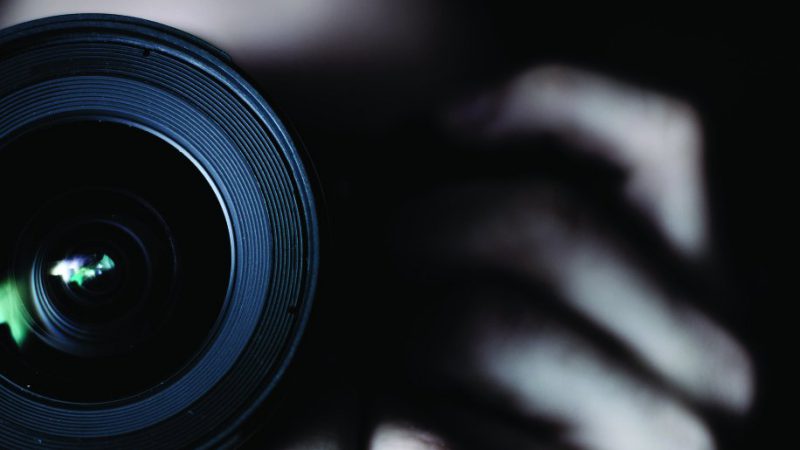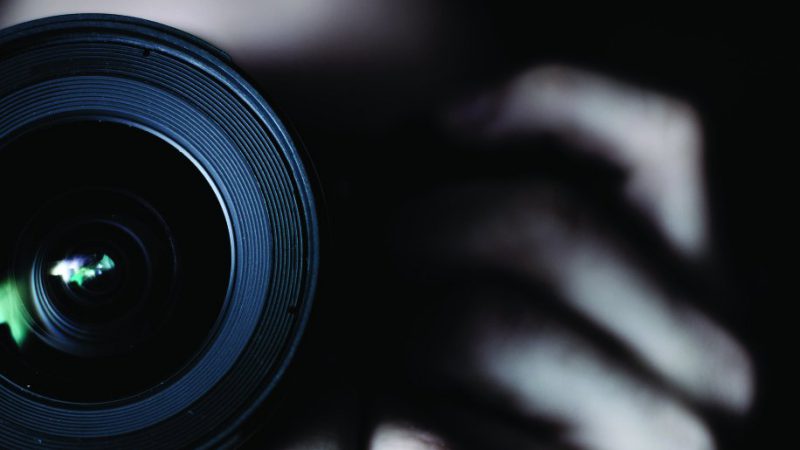Sharp Shooters
Advanced compact cameras pack great features in a small package. We zoom in on seven of the best
November 30, 2019


Sure, it’s tempting to take photos on your smartphone – after all, it’s right there in your pocket. But there’s still a gulf between the capabilities of a phone and a dedicated camera. First off, the zoom on a camera is optical, not digital. Even the most advanced phones with multiple lenses can only snap the best-quality image at certain points. The rest is digital zoom, which is really just a way of cropping the image which loses resolution. With a camera’s adjustable lens, every shot has full resolution.
Second, the image sensor on a camera is much bigger than a smartphone can manage. A bigger sensor means bigger pixels, capable of drawing in more light faster. No smartphone can match this – for the light from the lens to cover the entire sensor, you need a bigger distance between sensor and lens than is possible if the phone is to be anything like slim. Look for camera sensors that are an inch or bigger in size for outstanding results.
Basic compact cameras are cheap but that often means average quality. Advanced compacts, however, boast larger sensors, usually found on even pricier models such as SLRs and compact system cameras. Unlike those, compacts don’t have interchangeable lenses – which in turn means there’s no danger of dust getting into the camera body.
The latest advanced compact cameras offer a remarkable combination of features, size and price, and are ideal for taking on your trips. Here are some to consider.
Sony RX100 Mk VII
Sony’s range of RX100 cameras is impressive and the Mk VII model offers an 8x zoom lens – good for homing in on that shy wildlife specimen. It’s all contained in a very compact body (4.0 x 2.4 x 1.6 inches; 10.7 oz.) – the flash and viewfinder pop up when needed. The one-inch, 20.1-megapixel sensor is responsive and effective. There are better cameras for low-light photography but, overall, this model is hard to beat. The electronic viewfinder is bright and the LCD screen tilts for angled shots and flips around for selfies. It has a fast autofocus and can keep focus on moving objects, which works brilliantly. It also locks on to eyes in the shot so the subject is always in sharp focus. You can even record videos in superior 4K HDR resolution. $1,533; sony.com/electronics/cameras
Panasonic Lumix DC-LX100 II
The image quality on this camera is terrific, not least because of the big sensor – it uses a format called Four Thirds that is more than one-and-a-half times bigger than a one-inch sensor. The sensor has 17-megapixel resolution and the lens offers 3x zoom, which makes it pretty versatile. It’s full of features, including a burst mode that can shoot very fast, for much longer than a phone could manage. Similarly, the black-and-white effects here are much more accomplished than on a smartphone. Unlike some compacts, the handgrip means it’s easy to hold securely. The touchscreen display is clear and effective, with simple controls to fix the focal point with one tap (be careful not to do this accidentally). The results it delivers are low on picture noise and high on rich, sharp detail. Measuring 4.5 x 2.6 x 2.5 inches, it weighs 13.8 oz. $1,020; na.panasonic.com/us
Fujifilm XF10
Fun to use and with an attractive retro look, Fujifilm’s XF10 is especially pocketable thanks to its tiny size (4.4 x 2.5 x 1.6 inches) – although this means there’s no viewfinder, so you have to frame your shots on the touch-sensitive LCD screen. The sensor is big, a size called APS-C that measures 23.5 x 15.7mm. It delivers images that are sharp to the edges of the frame (whereas some other lenses leave the corners a little soft). Note that there’s a fixed rather than a zoom lens: a fixed lens means you can have the most precise glass of all, whereas adding a zoom to the mix can mean a compromise in quality. Fujifilm has a series of settings designed to make digital images look like they were taken on film cameras. It’s a particularly lightweight option, too – 9.8 oz., the second-lightest on test. $573; fujifilmusa.com
Canon G7X Mk III
The just-released update to Canon’s G7X range is slick and effective with a one-inch, 20.1-megapixel sensor and plenty of processing power. This camera is particularly good for video fans, with 4K recording, including for slow-motion effects. At 4.1 x 2.4 x 1.6 inches and 10.7 oz., it is easily small enough to slip in your pocket, and has a useful sculpted handgrip so is comfortable to use. Autofocus can be where a camera stands or falls and here it’s quick and precise, with face detection helping you to focus on your subject. The 4.2x zoom is useful and doesn’t bulk the camera up too much. As with some other models, the rear LCD screen (there’s no electronic viewfinder here) pops out for greater flexibility. $894; usa.canon.com
Leica Q2
If money is no object, this is a remarkable compact camera. It has a full-frame sensor, meaning it’s the same size as a frame of 35mm film in a film SLR camera. It’s the kind of sensor found only in DSLR cameras, and the most expensive ones at that, but here it’s crammed into a small body (5.12 x 3.15 x 3.62 inches, although quite heavy at 25.3 oz.). It is astonishingly high-resolution, too, at 47.3 megapixels. While the lens is a fixed focal length, a button switches it to longer lengths, although bear in mind that this reduces the resolution. The electronic viewfinder is detailed and a joy to use. This is a highly sophisticated camera, as you would expect from the price; it works brilliantly and reeks of class thanks to a gorgeous solid-metal body with immaculate build quality. $5,429; leicacamerausa.com
Nikon Coolpix A1000
Nikon’s latest camera is what’s called a superzoom compact – when you hear it has a 35x zoom lens, you’ll understand why. Such a mammoth zoom means you can photograph in great detail from a long distance (although bear in mind that at higher magnifications, camera shake is especially evident, so consider using a tripod). The electronic viewfinder is good – although no match for the one on the Sony (page 59) – and the LCD screen folds down so you can see it underneath the camera if you’re taking a self-portrait. There are a lot of manual controls to finesse every detail of your shot, and a proficient automatic setting that will sort everything out for you. In short – it’s small (4.5 x 2.9 x 1.6 inches; 11.7 oz.), powerful, easy to use and good value. $522; nikon.com
Olympus Tough TG-5
As the name suggests, this compact is advanced in one particular way – it’s a ruggedized camera, designed to survive a bang. Waterproof to a depth of 15 meters – useful if you’re swimming or skiing – it is also freeze-proof, and you can drop it from more than two meters’ height. As well as a competent 12-megapixel sensor, it has plenty of neat extras, such as a thermometer and compass for outdoor pursuits. The 4x zoom is good for a range of situations and is quick and reactive. Tough cameras are traditionally poor for image quality but this one is good, even if no match for cameras with bigger sensors. Both this camera and the Nikon have sensors measuring 1/2.3 inches, the smallest on test. It measures 4.4 x 2.6 x 1.2 and weighs 8.7 oz. $536; olympusamerica.com
Camera types explained
With the wide array of cameras on the market, it can be hard to work out exactly which type to go for. The top of the photographic tree in every respect is the digital SLR, or DSLR. Premium build quality and interchangeable lenses are among the standout features. For the best professional-level shots, this is what you need.
Still, the DSLR isn’t small, not least because of the single-lens reflex mirror system that gives the camera type its name. Enter the CSC (compact system camera), which is like the DSLR but significantly more petite because it uses an electronic viewfinder instead of mirrors. Although it’s not yet quite as good as a DSLR, the gap is narrowing and the latest models are pretty sumptuous.
Then there’s the bridge camera (so-called because it’s bridging the gap between compact and DSLR). The key features here are a chunky build and a long zoom lens that is fixed to the camera. For many, the bridge is the perfect balance of advanced capabilities and ease of use.
Oh, and then there’s the basic point-and-shoot camera, which in most ways is still several steps up from even the best smartphone, although not as small as a phone. A compact camera is cheap, too. It’s good for having in your pocket or bag, ready to be whipped out when an unexpected Kodak moment occurs. Here are examples of outstanding cameras in each genre.
DSLR: Canon EOS 5D Mk IV
The perfect DSLR combines solid ergonomics, breathtakingly fast performance and the best-quality lens. If it’s not actually perfect, the Canon 5D comes as close as you’re likely to get. Boasting a 30.4-megapixel sensor and advanced autofocus, this handsome all-rounder is great for video as well, offering the right balance of advanced features with intuitive ease of use. From $3679; usa.canon.com
COMPACT SYSTEM CAMERA: Panasonic Lumix DC-S1
Panasonic’s mirrorless cameras are hard to beat, combining extraordinary image quality with a simple interface and attractive looks. The smaller size is made possible by the CSC design and means the DC-S1 has everything a DSLR has apart from the bulk and weight. From $3,831; na.panasonic.com/us
BRIDGE CAMERA: Nikon Coolpix P900
Bridge cameras can be had for less money but this model is beautifully built and works well. It has the convenience of a long zoom (a remarkable 83x), a rotating screen, WIFI and GPS. The 16-megapixel sensor is not huge but is effective, and the camera delivers good results whether you’re shooting landscapes, wildlife or portraits. $611; nikon.com
BASIC COMPACT: Sony W830
A basic compact is highly pocketable and offers strong image quality for very little money. Nobody makes better compacts than Sony. This 20.1-megapixel model has a useful 8x optical zoom and image stabilization. It’s slim and has scene options that can work out what you’re shooting and adjust the exposure accordingly. $152; sony.com




